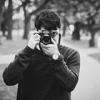-
Similar Content
-
Posts
-
Sweet Creek Falls, Oregon. X-H1, Viltrox 13mm F1.4, Acros.
Welcome, dear visitor! As registered member you'd see an image here…
Simply register for free here – We are always happy to welcome new members!
-
I think my Fuji 150-600 F8 is a brilliant wildlife lens in terms of sharpness, portability and value but the small aperture does cause issues at the start and end of the day - even pushing the ISO as far as I dare, I can see shutter speed down to 1/25s - stabilisation isn't an issue but asking a deer to stand still for that is too much! In the same situation, an F4 would give 1/100s so the difference to the success rate would be phenomenal... and that's without the other improvements like shallower depth of field. I also find that the Fuji's subject detect AF gets pretty iffy in low light - I keep updating to the latest firmware but it doesn't seem to get any better. I was originally looking at the Nikon 500mm F4 E but good examples secondhand are still reasonably expensive but like-for-like Sigma lenses are around half the price. Reviews I have read suggest that they are as good optically, AF performance and IS-wise but you gain a few hundred grams of weight (but less than the older Nikon model). For a couple of grand, I can live with that. Does anyone have any experience mounting one on an XH2S? What about with the 1.4 teleconverter? It feels like that is pushing it anyway - hefty lens + TC + Fringer all sounds a bit...wobbly? It is on the Fringer approved list but I am wary about AF speed in particular. I had also considered looking for a used Nikon 400mm F2.8, which would be even faster (and heavier) and could couple with a TC to give 560mm F4 but again, it is that lens+TC+Fringer combination that worries me as being just too many links in the chain. Of course, what I really want is a native Fuji prime but that doesn't seem to be on the horizon - and if you look at what Nikon and Sony are doing, if Fuji do ever bring out a 500mm prime, it will probably be a small, light and cheapish F5.6, which is only 2/3 stop better than my zoom at the same focal length. Any thoughts anyone?
-
The Amazon link is an annoying feature of this forum - its automatic and is applied to every post for advertising purposes. My question was - how do you know the camera wi-fi is on and requires turning off? I would have thought this would just use up the battery for no purpose if you aren't specifically using a function that requires wi-fi.
-
By anonsailor · Posted
I've made a point to push Angelbird memory products as they are the best performance cards you can get, The sustained write speed is important. -
Thanks for the replies everybody. But unfortunately that Amazon link says nothing about how to turn off the Fujifilm X-T20 WiFi signal receiver. I just want to know if there IS an option to turn it off. Otherwise I'm going to have to resell this beautiful camera and go back to a (lightweight) Nikon DSLR, such as the D3500 which I understand has very well behaved IQ results.
-



Recommended Posts
Join the conversation
You can post now and register later. If you have an account, sign in now to post with your account.
Note: Your post will require moderator approval before it will be visible.